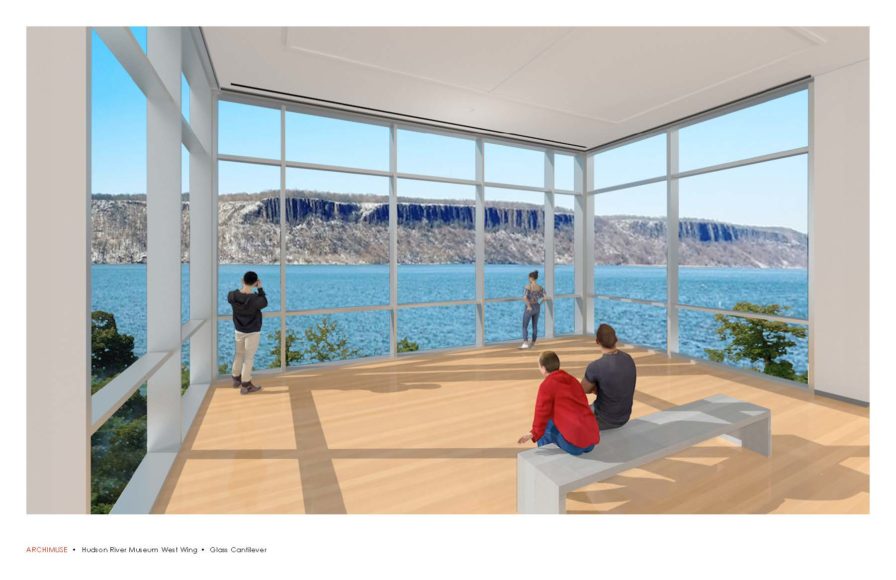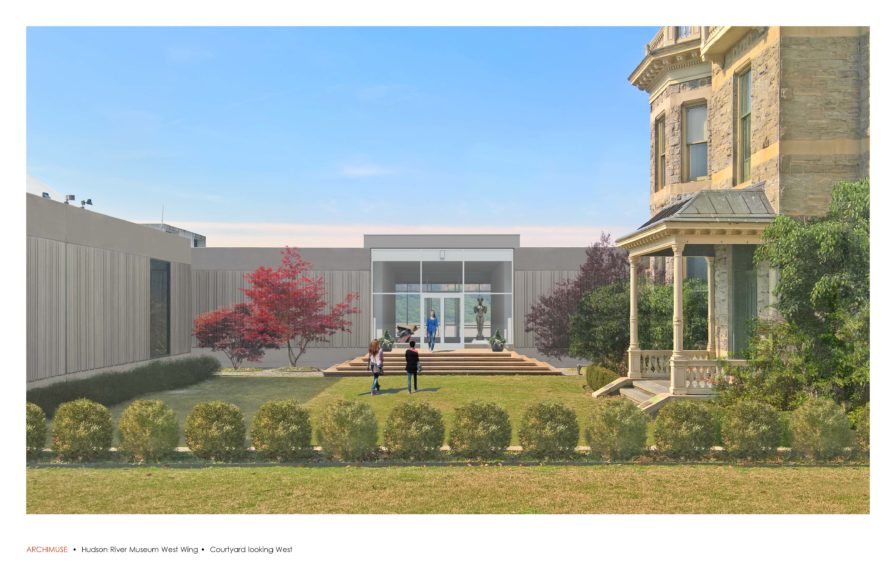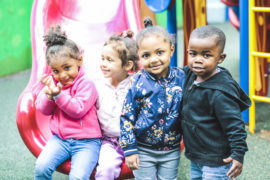The largest cultural institution in Westchester County, the Hudson River Museum in Yonkers is about to get bigger — in more ways than one.
The museum — known for its exhibits on the art, history and science of the Hudson Valley and beyond; its planetarium; and Glenview, a landmarked Victorian mansion featured on HBO’s “The Gilded Age” — is near the end of a two-year, $12.3 million West Wing capital improvement project that will expand the museum’s footprint from approximately 40,000 square feet to 52,000 square feet. (For the project, the museum received $6.2 million from Westchester County, $5.5 million from Yonkers and $630,000 from the state.)
A sculpture court, a 100 tiered-seat auditorium, a 3,000-square-foot art storage space and a climate control system — under the aegis of Archimuse, a Manhattan architectural firm, and GTL Construction, based in White Plains — will blend with a campus that includes a central courtyard and splendid views of the Hudson and Palisades beyond.
But what may be of particular interest for the 80,000 visitors a year from 42 states (pre-Covid) are the new galleries, opening this fall, that will also transform the existing exhibit space, says Masha Turchinsky, the museum’s director and CEO.
“We’re very excited about the dedicated Special Exhibition Galleries,” she says. “What this means is that the spaces traditionally used for special exhibits will be able to feature more of the permanent collection.”
Those holdings include nearly 18,000 paintings, sculptures, works on paper, photographs, decorative art objects, costumes, textiles and historical items from the 19th century to the present. Recently, the museum announced two additions — Fitz Henry Lane’s serene, panoramic “Gloucester, Stage Fort Beach” (1849), much in the style of the Hudson River School of 19th-century landscape painting; and Severin Roesen’s Old Masters-inspired still life “Fruit With Water Glass” (circa 1850-70). The two oils on canvas, the gifts of Shelley and Felice Bergman, are part of “Cycles of Nature: Highlights From the Collections of the Hudson River Museum and Art Bridges” (through Feb. 12, 2023) — Art Bridges Collection Partnership Program being the brainchild of arts patron and Walmart heiress Alice Walton to supplement exhibits of American art at museums around the country.
The permanent collection will also play a key role in “New Order: Experiments in Collections” (June 17 through Sept. 3), which will include 11 19th- and 20th-century paintings from Omaha, Nebraska’s Joslyn Art Museum, now undergoing renovation. (These works appear as part of the Art Bridges program.)
Besides Special Exhibition Galleries — which will be inaugurated Oct. 22 with the exhibits “Kengo Kito: Unity on the Hudson” and “Rivers Flow / Artists Connect,” both through May 14, 2023 — there will be a new Community and Partnership Gallery that will “break down the silos” among various groups in the county, Turchinsky says, as they work together on exhibits based on certain themes. So schools might find themselves partnering with scientists to look at climate change or with emerging artists for an exhibit on works in different media.
Why is the construction of these new galleries and their interplay with existing exhibit spaces important not only to arts lovers but the business community? Because they demonstrate, Turchinsky says, that the museum transcends the river that runs through it metaphorically and the Hudson River School that defined the Americas as the new Eden in the decades that bracketed the Civil War.
“Museums are at their best when they reflect the places in which they’re located.”
The Hudson River Museum’s diverse hometown of Yonkers, the subject of WAG’s December issue, occupies a strategic location between an equally diverse New York City and a changing Hudson Valley.
“So we can take a Hudson River School painting and bring in slam poets, DJs and spoken-word artists…and bring that historical work into conversation with the present day.”
With an operating budget of $2.9 million and 25 full-time and 13 part-time employees, the museum also has “a vibrant group of adult docents” and 75 junior docents from Yonkers Middle High School, Lincoln High School and Riverside High School who’ve met such leaders as United Nations Secretary-General António Guterres and U.S. Ambassador to the UN Linda Thomas-Greenfield.
But perhaps nothing better crystallizes the idea of bridging different cultures than the museum’s exhibits “The World of Frida Kahlo” and “Frida Kahlo in Context” (both through May 22), which explore the life and work of a painter who embraced her indigenous-Mexican and German heritages.
Turchinsky, too, is a bridge — fluent in Spanish as well as English with a working knowledge of Italian and Ukrainian. (Born and raised in Yonkers, Turchinsky is of Irish-Ukrainian descent. She says she has family in the eastern and western parts of Ukraine, with whom she is in frequent contact via social media. It is, she adds, not easy to leave the country. She describes the situation as “heavy.”)
She holds a Bachelor of Science degree from Georgetown University, an M.A. in education from New York University and an Ed.M. in international educational development from Teachers College, Columbia University.
“My interests have always been in informal learning environments, such as museums.”
`For some 20 years, she rose through the ranks of The Metropolitan Museum of Art’s education and digital departments with a focus on media. There she also served as a delegate to The Met’s board of trustees, which would prove invaluable at the helm of the Hudson River Museum, a position she assumed on Jan. 1, 2017.
In a subsequent conversation, she thinks back to a time when, fresh out of Georgetown with two suitcases, no job, no apartment and no contacts, she took herself off to Madrid to immerse herself in Spanish life and culture. What she discovered wandering the Museo del Prado and other iconic Spanish institutions, she says, is that while she might’ve been alone in a museum, she was never lonely.
Turchinsky — who lives in Yonkers with her husband and two children — wants Hudson River Museum visitors to feel that kinship.
“For someone to come into the museum, commune with a painting and have a relaxing time — that means we’re doing our job.”
For more, visit hrm.org.








